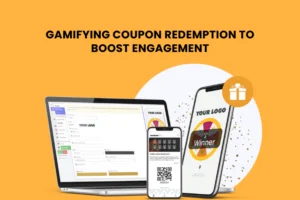
Building Blocks: How to Create Effective Customer Loyalty Programs in the USA
- Clearly Define Your Goals
- Understand Your Audience
- Choose the Right Type of Program
- Utilize the Right Technology
- Create Appealing Rewards
- Promote Your Program Effectively
- Train Your Team
- Monitor, Evaluate, and Adapt
Creating an effective customer loyalty program is crucial for businesses aiming to enhance customer retention, increase engagement, and drive sales growth in the competitive U.S. market. Such programs not only reward repeat customers but also gather vital consumer data that can help refine marketing strategies and improve overall customer satisfaction. Here are the essential building blocks for developing a successful customer loyalty program in the USA.
1. Clearly Define Your Goals
Before launching a loyalty program, it’s essential to define what you hope to achieve. Are you looking to increase the frequency of purchases, boost average order values, or perhaps enhance customer lifetime value? Setting clear, measurable goals helps ensure that the loyalty program is aligned with your broader business objectives and provides a framework for measuring success.
2.Understand Your Audience
Knowing your target audience is critical. Conduct market research to understand your customers’ needs, desires, and shopping behaviors. This insight will allow you to tailor your loyalty program to resonate with your audience, ensuring it offers rewards and benefits that are truly valuable to them. For instance, a customer loyalty program for a boutique might focus on exclusive experiences, while a grocery store might benefit more from discount-based rewards.
3. Choose the Right Type of Program
There are several types of loyalty programs, each with its unique advantages:
- Points-based programs are straightforward and encourage repeat purchases by allowing customers to accumulate points that can be exchanged for rewards.
- Tier-based programs create a sense of exclusivity and achievement, offering greater rewards as customers reach higher levels.
- Subscription programs provide continuous benefits for a regular fee, which can generate steady revenue and deepen customer engagement.
- Value-based programs focus on shared values, contributing a portion of purchases to charitable causes, which can resonate deeply with customers who are motivated by social responsibility.
4. Utilize the Right Technology
Selecting the right technology platform is crucial for the efficient management of a loyalty program. Your platform should integrate seamlessly with your existing POS systems and e-commerce platforms, offer easy signup and reward redemption, and provide robust data analytics capabilities. Digital tools and mobile integration are particularly important in the U.S., where consumers are increasingly looking for convenient, on-the-go ways to interact with loyalty programs.
5.Create Appealing Rewards
Rewards are the core of any loyalty program and should be both appealing and attainable. Consider a mix of short-term and long-term rewards to keep different segments of customers engaged. Exclusive offers, special member events, and personalized rewards can make your program stand out. Remember, the best rewards are those that increase in value with more customer interaction and purchases.
6. Promote Your Program Effectively
Effective communication is key to the success of your loyalty program. Utilize every available channel—email, social media, your website, and in-store signage—to educate customers about your program and its benefits. Launch promotions and special events to encourage signups, and consider offering a signup bonus to jump-start participation.
7. Train Your Team
Your staff should be well-versed in how the loyalty program works and its benefits to effectively promote it to customers. Regular training sessions can help ensure that all team members are knowledgeable and can answer any questions that customers might have.
8. Monitor, Evaluate, and Adapt
Continuously monitor your loyalty program’s performance and use customer feedback to make improvements. Analyzing data collected from the program can reveal insights into customer preferences and behavior, allowing you to refine the program over time. Be prepared to adapt the program to meet changing market conditions or customer needs.
Conclusion
Building an effective customer loyalty program in the USA requires a strategic approach, focused on understanding customer needs, offering valuable rewards, and leveraging technology for seamless program management. By following these building blocks, businesses can create loyalty programs that not only foster lasting customer relationships but also drive meaningful growth in the highly competitive American market.




